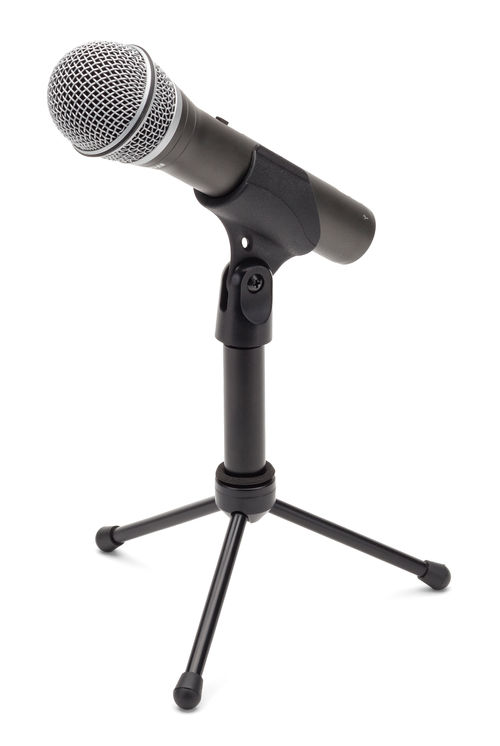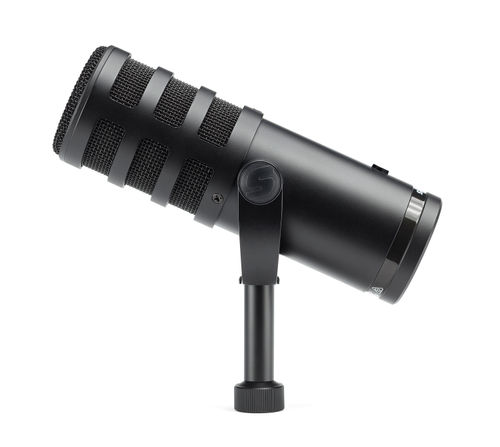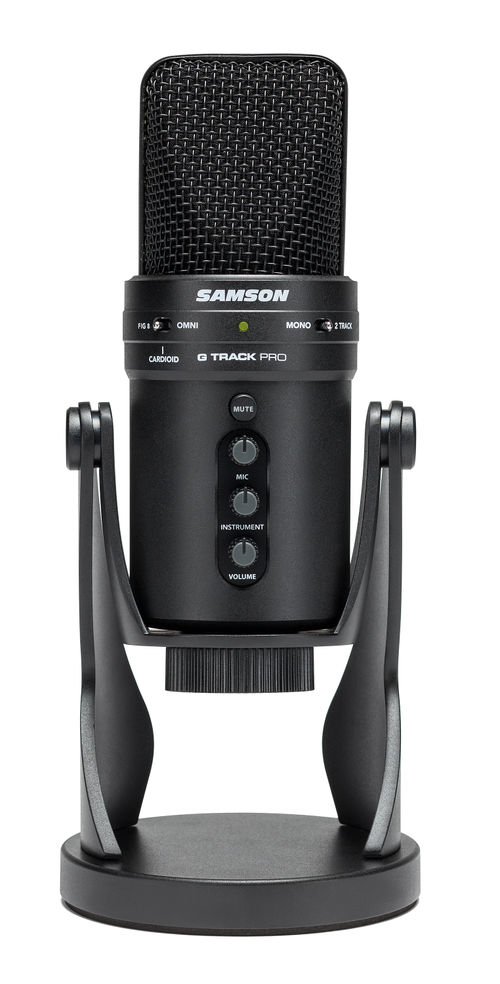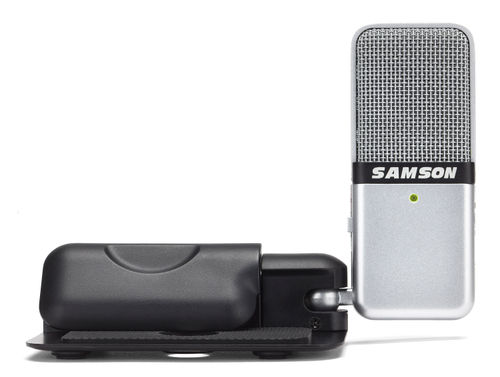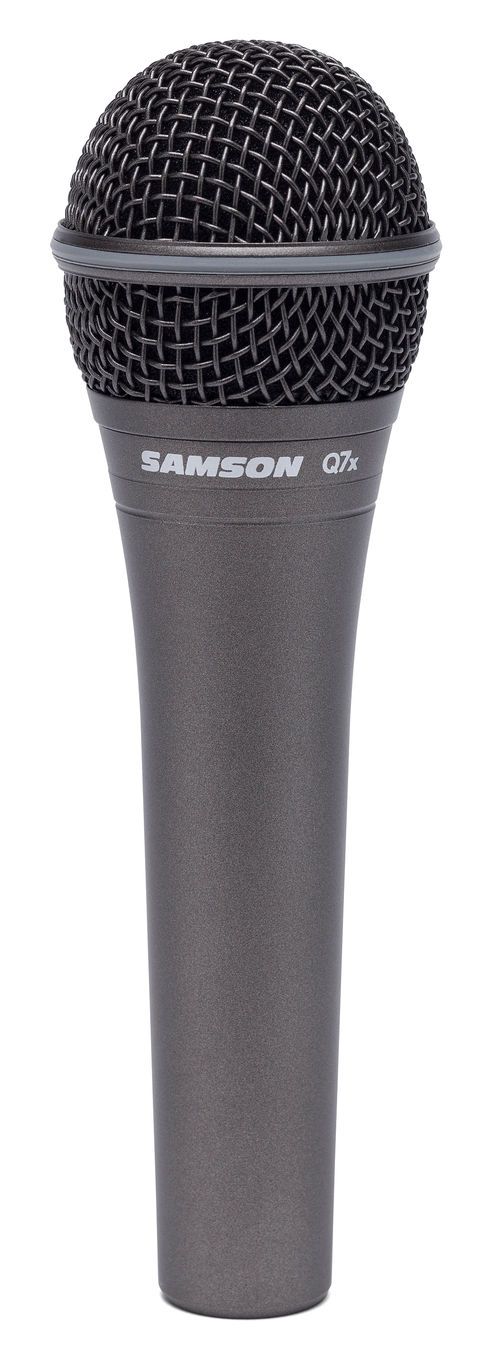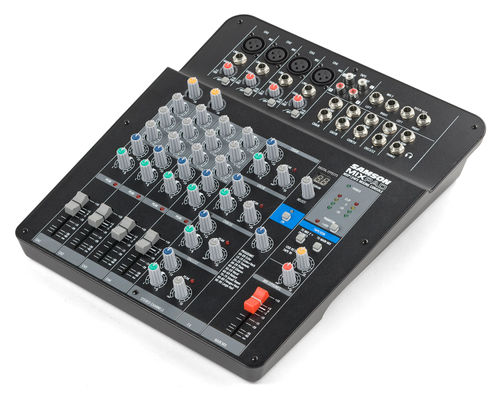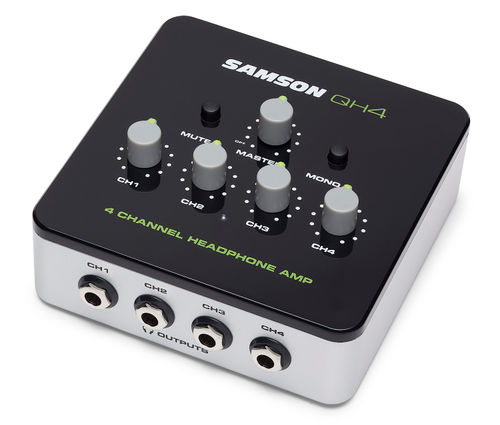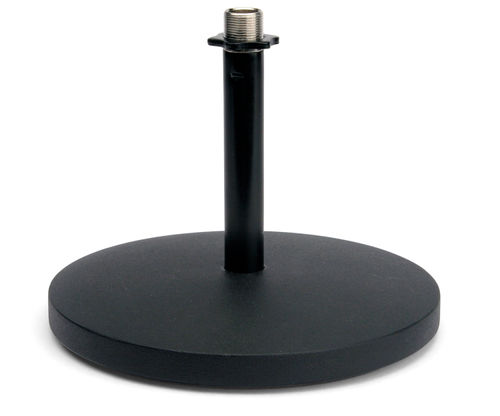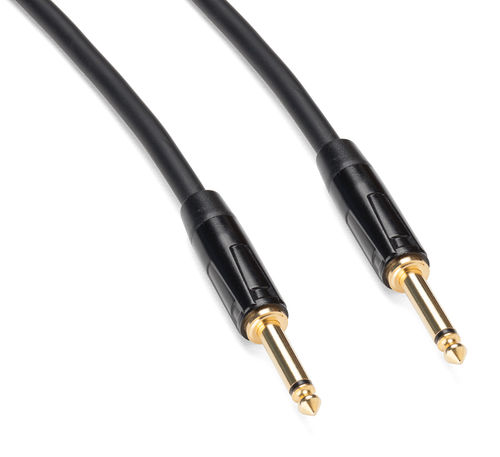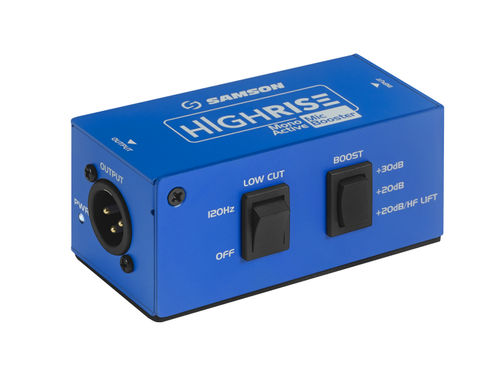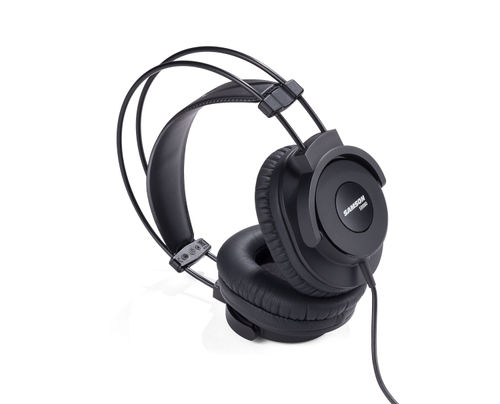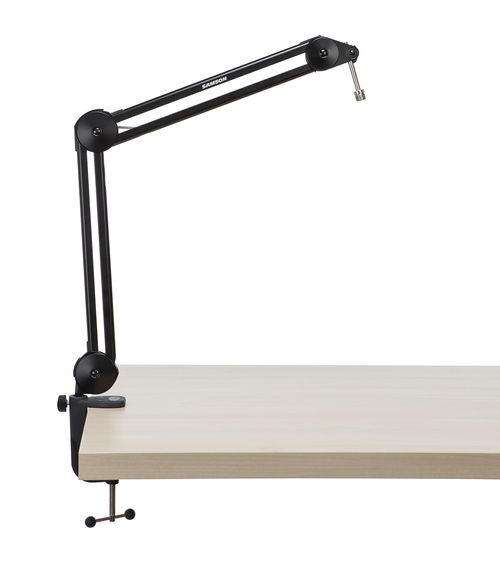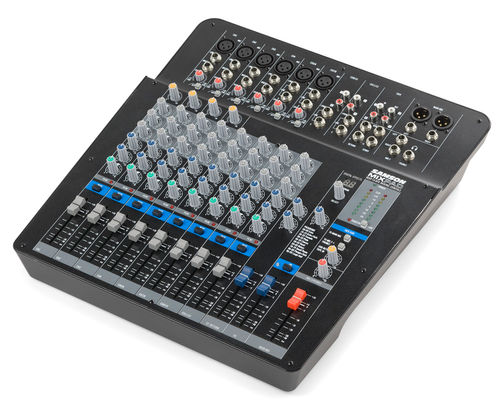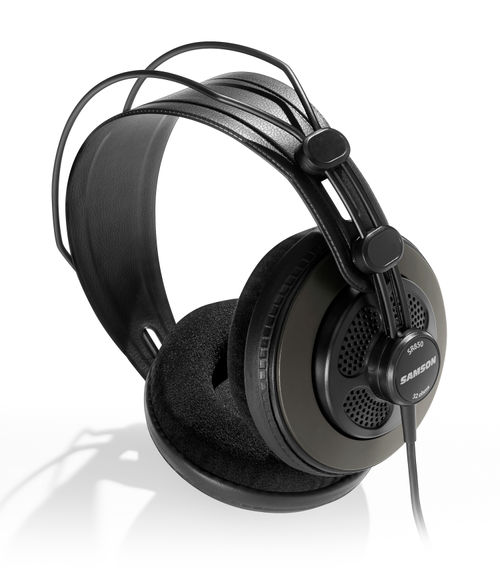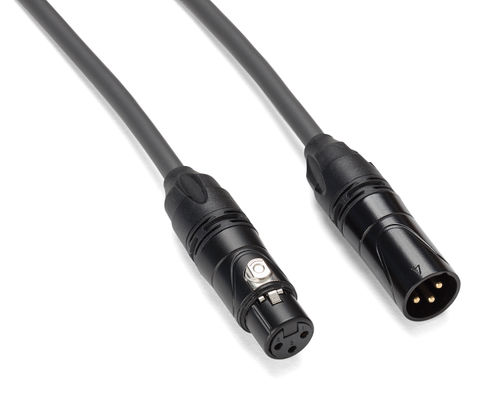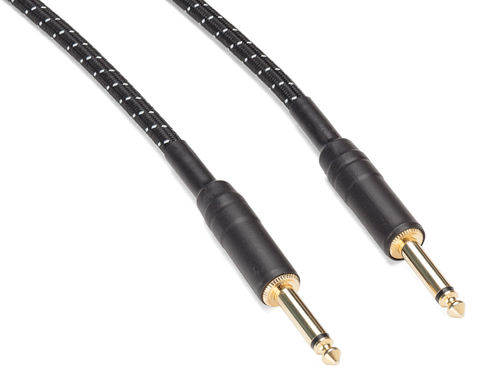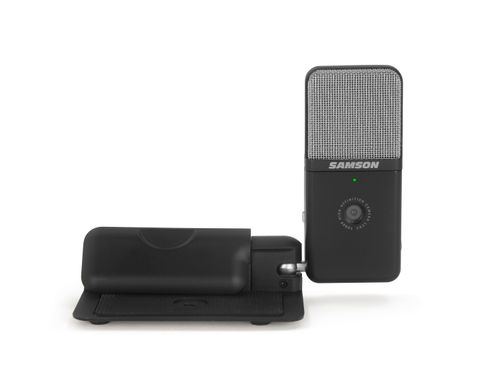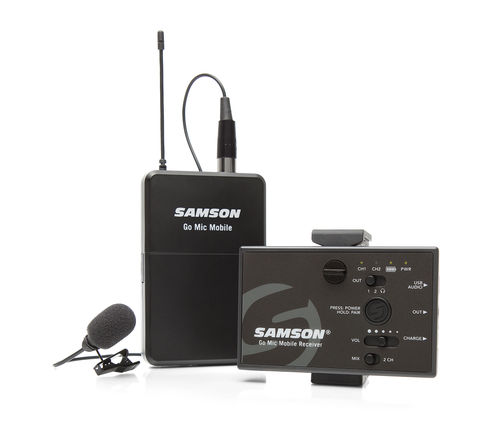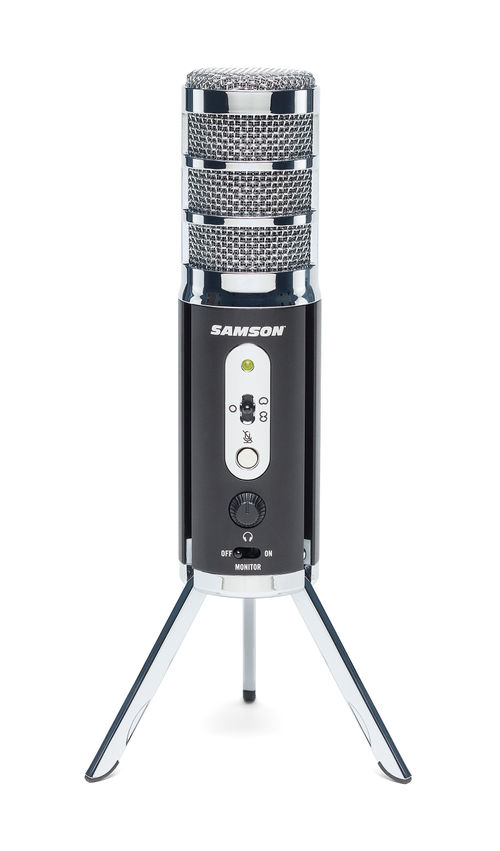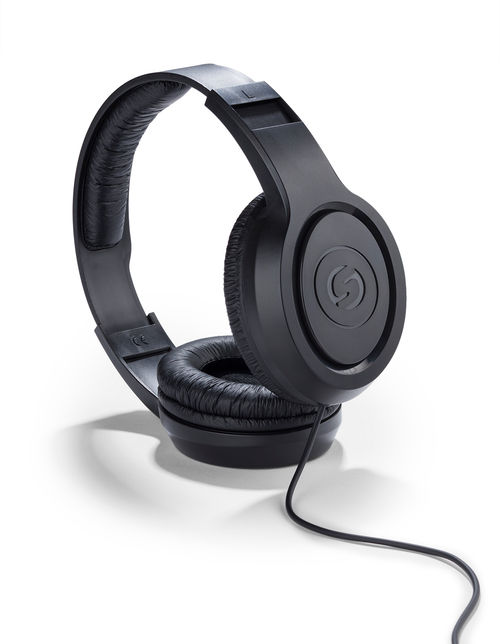Podcasting Buyers Guide
PODCASTING SOLUTIONS
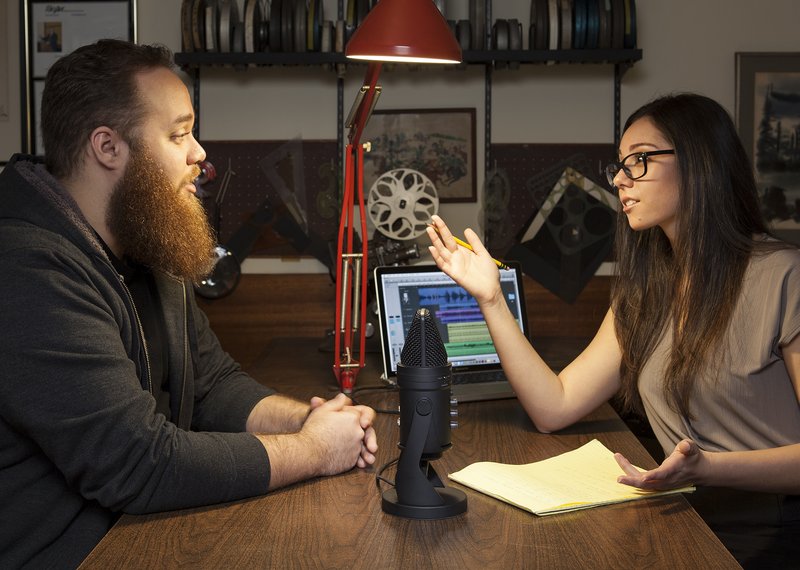
Are you an expert on a topic and looking to inspire your listeners, or do you have a great idea and need to express it to others? Podcasting allows you to create original content and bring it to the world.
From starting out to going pro, Samson brings you quick, affordable solutions to every podcasting need. Follow along and learn about what you can do – and how Samson can help you do it.
The Basics
What’s a podcast?
Podcasting has been around since the dawn of the 21st Century. Long before the Internet could support live audio streaming, people still wanted to get their ideas out there in listenable form. The solution was to record and produce their content at home, upload it to the Internet in a place where people could find it, and add a little bit of HTML code so it was easy for listeners to download.
When hard drives were small, collecting a lot of these podcasts wasn’t very practical, and besides, listening to them on your computer tied you to one place when you might rather listen in your car or out for a walk. Wouldn’t it be great if there was a compact and portable way to carry a bunch of podcasts anywhere?
And now you know where the word “Podcast” comes from: from that world-changing portable MP3 player, the Apple iPod.
Since then, podcasting has exploded in popularity. As technology has grown more sophisticated and Internet speeds have gotten faster, the tools to upload and publish podcasts have gotten so simple that anyone can do it. The one thing requiring a bit more hardware is producing the best possible audio, and Samson’s line of products bring high quality to any budget.
Microphones
Speak your mind
The essence of any podcast is your voice. It has to come across loud and clear, and while you could use the mic built into your laptop, well… we all know what those sound like. For your podcast to catch and engage listeners, your voice has to sound its best, and Samson’s line of microphones is a great place to start.
Dynamic vs. condenser
You’ve probably heard the terms “dynamic mic” and “condenser mic” before. What’s the difference, and why does it matter to a podcaster?
These terms refer to the actual mechanism that turns sound into electricity. A dynamic mic is like a tiny speaker in reverse: sound waves in the air hit it and make it move, and the movement of the capsule’s coil creates a changing magnetic field, which in turn creates electrical signals.
A condenser mic is a large capacitor (“condenser” was an old term for capacitors): its capsule has a thin moving diaphragm suspended near a fixed metal plate with an air gap between them. The movement of the diaphragm changes the capsule’s capacitance, which in turn generates electrical signals.
These differences give each mic design its own strengths and weaknesses. Dynamic mics work with no external power source, and they’re usually designed to take a lot of physical punishment, able to recover from being dropped, kicked, hit with drumsticks, and sometimes even doused with liquid. This makes them ideal for live performance and field work. However, they tend to pick up frequencies in a relatively limited range, so they must be tuned for specific applications. For example, Samson’s Q71 mic is tuned for very low frequencies like bass and kick drum, where other mics like the Q8x are optimal for guitar amps, brass… or the human voice.
Condenser mics have extremely clear response across the entire frequency spectrum, and can be tuned to emphasize or suppress various parts of that spectrum: one mic may have a sharp presence peak at high frequencies, while another may have a broad range of emphasized mids for more warmth. However, these mics can be quite sensitive to sounds beyond the intended source, picking up artifacts ranging from untreated room reflections to handling noise. These mics are ideal for studio placement, where they aren’t moved during use and can be handled carefully.
Both designs are valuable to the podcaster, depending on the application.
HEADPHONES
Hear with confidence
Whether you’re recording your voice or listening as you mix and edit your podcast, you need to hear what you’re doing. While studio monitor speakers are a great solution for larger podcasting rigs with more space to work, thousands of podcasts are created every day with the content creator using a good pair of headphones.
Earcup design, sound, and feel
When shopping for headphones, you’ll hear terms like On-Ear vs. Over-Ear (sometimes written “supraaural” vs. “circumaural) and Closed-Back, Open-Back, or Semi-Open. All of these terms refer to how the headphones’ earcups are designed.
An On-Ear headphone does just that: it rests on the outside of your ears. On-Ear headphones tend to be smaller, often more portable, and more comfortable to some users. An Over-Ear headphone surrounds your outer ear completely and seals against the side of your head. These designs are larger, and again, more comfortable for users who dislike On-Ear designs. A lot of that is a matter of comfort over long periods.
As you might guess, Closed, Open, and Semi-Open refer to how the earcups themselves are constructed. Closed-Back headphones isolate outside sounds and are great for working with microphones, so your monitor signal doesn’t bleed into them. Most Samson professional SR headphones are closed designs, as this best serves the needs of many podcasters and other audio professionals.
Fully Open-Back headphones tend to have a more smoothly accurate sound and can be lighter and more comfortable, but aren’t suitable for use near an open mic, so we can’t recommend fully open designs for podcasters. However, Semi-Open designs like Samson’s SR850 combine the advantages of closed and open, with relatively good isolation but a bit of the open-back sonic character and more breathability – in fact, the SR850 is Samson’s most popular headphone.
All of these types will give you great sound. You should pick a set that does what you need it to with the most possible comfort.
MIXERS AND INTERFACES
Put it together and send it on its way
A mixer brings together several audio sources and lets you adjust their relative levels, pan positions, and tonality, before bringing them together in a single mix containing all of your sources in proper balance. A USB interface takes this mix and converts it into digital data for transmission to a computer, and brings back data to turn into audio you can hear. Podcasters often take advantages of mixers with built-in USB interfaces as well.
Mixer functions and why they matter
A mixer brings in several kinds of audio signals and optimizes them for mixing. Microphones of various kinds will require different amounts of amplification. They may have low-frequency rumble that needs to be cut out at the source, or unpredictable audio levels that need to be tamed. Line-level sources like keyboards or DJ turntables will have different types of connectors. Some signals may need external processing before you mix them.
Once they’re in the mix, signals might need to have their frequency response adjusted with EQ before they are panned in the final mix. You might want to apply global effects to them in differing amounts. If you’re working with musicians, they may want to hear their own mixes that are different than your final result, such as one with a click track or more lead vocal. Finally, you will decide where to send the results – to the computer via a built-in USB interface, to your speakers, to headphones, or all at once.
Depending on your needs, there are mixers of various sizes and feature sets out there, but the Samson MixPad USB mixers do everything we’ve described here and more.
GETTING STARTED
USB Microphones - the all-in-one podcasting solution
Everybody has to start somewhere, and a starter podcasting rig doesn’t have to cost an arm and a leg or sound amateurish. A USB microphone combines all of the essential elements of a simple podcast studio in one neat package.
Besides the microphone itself, there’s almost always a built-in headphone amplifier so you can hear what you’re doing, as well as essential elements of a mic’s audio processing chain: a preamplifier, analog-to-digital converter, and USB interface communicating with your computer – and providing power to the mic.
Note that not every USB microphone handles only one voice. The Samson G-Track Pro is a great all-in-one solutions for solo musical artists and podcasters who do occasional interviews. Its microphone has multiple polar patterns, including a stereo mode for two people on either side of the mic, and an extra 1/4” input for a solo instrument like guitar or keyboard.
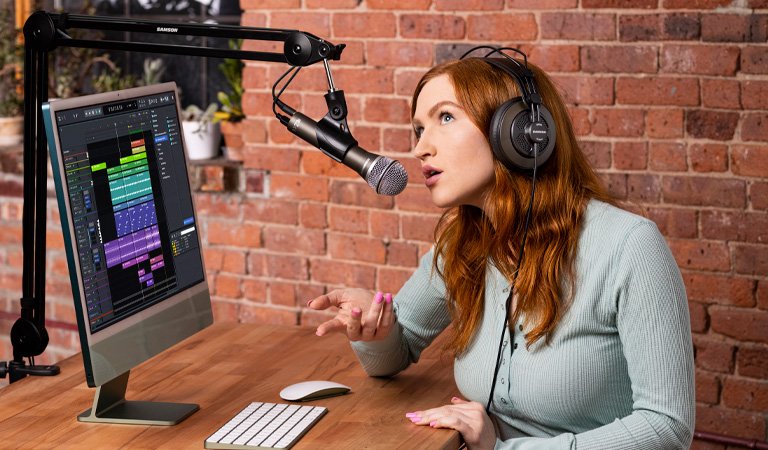
If you think you may want to eventually build up to a bigger studio, it’s a good idea to invest in a hybrid mic, which can work alone via USB or plug into conventional audio gear with an XLR cable like those in the Tourtek Pro line. The Q2U and Q9U dynamic headphones can be used in either mode, so they’ll remain solid parts of your rig as your studio grows.
ADDING POWER: The Podcast Studio
For many podcasters working alone, a single USB mic may be a perfect solution. But if you want to do more – have multiple hosts or guest performers, or add music – Samson’s got you covered.
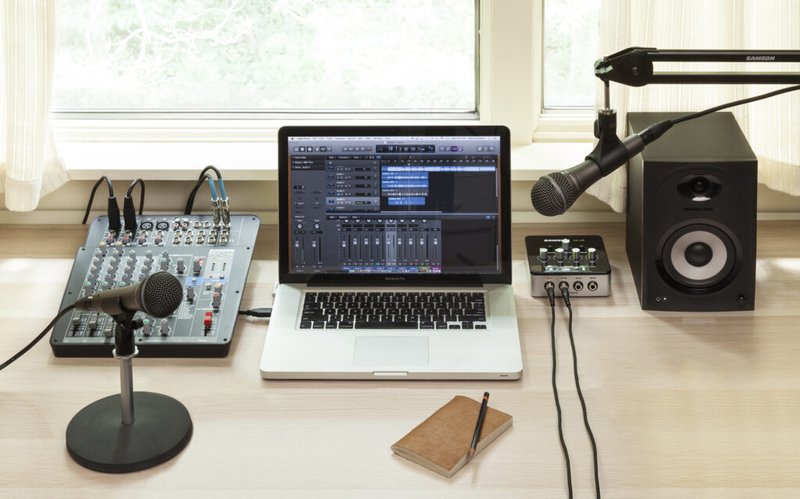
What’s new when you graduate from one USB mic to a Podcast Studio?
Your extra needs for this studio will prompt some changes to how you work and what you need:
- Using more than one mic means you’ll want to step away from a USB-only microphone
- You’ll need to hear all of the audio sources in your studio, not just yourself
- If multiple artists are in the studio at once, they’ll all need to hear what’s going on
- To keep your recordings noise-free, it’s time to invest in accessories to help your gear sound its best
- Now that you’re working with multiple devices, you’ll have to connect them without losing sound quality
If this sounds like a scary amount of new gear to grapple with, it isn’t. Here’s a list of Samson solutions for all these needs.
We’ll start with the Q7x Professional Dynamic Vocal Microphone as your new studio’s workhorse mic. It captures a wide dynamic range and its midrange is tailored for a warm, natural sound on voices. Add to this its extremely low handling noise, and you have a fantastic mic for on-air talent who get excited and move around a lot. It’s versatile enough to remain a vital part of your studio as it grows!
Working with all of your audio sources can be done in one place with the MXP124FX 12-Input Analog Stereo Mixer with Effects and USB. Its premium MDR (Maximum Dynamic Range) mic preamps will cover up to four mics with wide frequency range and natural response. Two of the mic inputs have built-in compressors to tame talent with a lot of dynamic range. It’s got built-in effects, four stereo inputs for anything from keyboards to stereo submixers, and its built-in USB interface lets you capture and play back high-quality stereo audio.
If you’re not sure about how to get started with headphones, the SR550 Over-Ear Studio Headphones are a great place to start. It’s a lightweight over-ear design with a closed back, offering a wide 20Hz–20kHz frequency response to provide an accurate image of what you’re listening to.
If the other talent in your studio needs to hear what you’re doing too, then run the output of your mixer to the QH4 4-Channel Headphone Amplifier. This compact box lets each listener adjust their own headphone level at very high sound quality, so there’s one less thing for you to worry about as you record.
Because XLR microphones need to be placed in lots of different applications, they don’t come with a simple stand like USB mics often do. That’s why your tabletop setup needs a secure, compact mic stand for each of your mics… like the MD5 Desktop Microphone Stand, a compact weighted 5” stand. Nice and simple!
Last but not least, you’ll need high-quality cables to hook everything together. You’d be amazed at how many podcasters wonder why their audio sounds substandard, when they cheaped out on bad cables! Samson’s Tourtek Pro TPM Microphone Cables give you excellent quality with oxygen-free copper stranding, a 99%-coverage braided shield, carbon-impregnated conductive PVC insulation, and 24k gold-plated connectors.
For instrument hookups, the Tourtek Pro TPI Instrument Cables offer the same quality construction as the TPM mic cables but with 1/4” plugs for guitars, basses, and keyboards.
GOING LIVE: The Streaming Studio
While podcasts are great for listening anywhere once they’re downloaded, there’s undeniably something special about live streaming, where you can directly interact with your audience as you offer your content – whether that’s one-on-one interviews, panel discussions, or live music performances. You can turn your home podcast studio into a live streaming rig with ease, using Samson products made for the purpose.
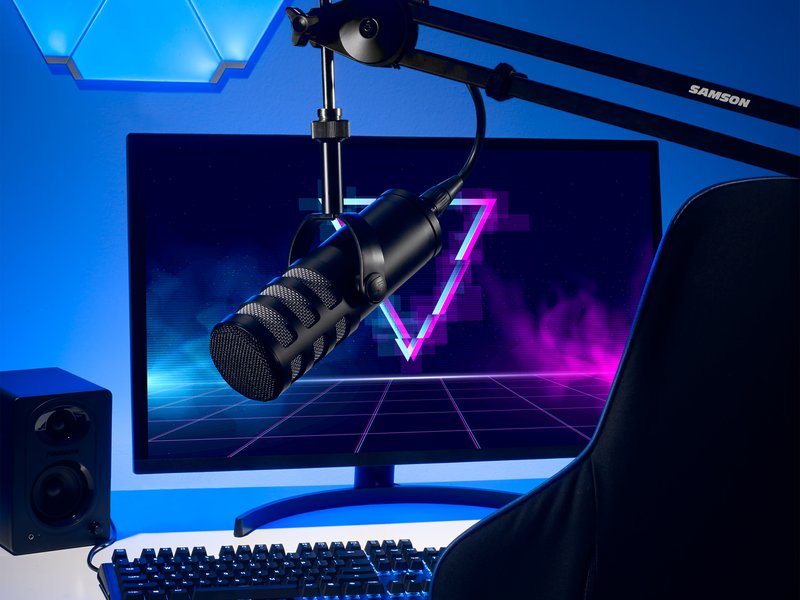
What’s new when you stream?
Moving from a basic podcasting studio to live streaming doesn’t involve a whole lot of changes, but there are a few things you can do to make your live streams go smoother, especially if they have a video component:
- supplement your current mics with a more powerful broadcasting option
- a larger and more powerful mixer will let you handle a wider variety of voices and musical instruments
- More flexible mic mounting gives you better mic placement and a better look on camera
Here are some worthwhile suggestions to get you off to a great start in live streaming:
Every live stream benefits from a great voice leading the way. The Q9x Broadcast Dynamic Microphone gives you the sound of classic radio, where announcers use big, beefy-sounding dynamic mics to give them a huge sound that instantly grabs attention.
The Q9x offers optimized frequency response for voiceover artists and singers, excellent off-axis rejection and resistance to electrical interference, optional mid boost for even more vocal power, and integrated shock and wind noise protection. It’s a dynamite centerpiece for a streaming setup. The HighRise mono active mic booster raises the level of the microphone so you don't have to use as much gain on your mixer or interface, which in turn helps minimize the noise that can be caused by raising the mic preamp.
If you’re just getting started but are looking at going this way eventually, grab the Q9U XLR / USB Broadcast Dynamic Microphone, which lets you use USB at the beginning and switch to XLR when you add a mixer.)
While the MixPad MXP124FX 12-Input Analog Stereo Mixer with Effects and USB is a great mixer for live streaming needs for up to four voices and four stereo instruments, you might want to consider the MixPad MXP144FX 14-Input Analog Stereo Mixer with Effects and USB for its more flexible output routings, wider range of internal digital effects, and its pre-fader Monitor mix, which visiting bands will find really useful.
A closed-back headphone with professional sound quality will give you confidence when the red light’s on, as you’ll hear exactly what’s going on and be sure your audience likes what it’s hearing. The SR880 Professional Studio Reference Headphones give you great isolation to keep what you’re hearing out of your mic, an exceptional 10Hz–25kHz frequency response, and a self-adjusting headband and heavily padded earpieces for smooth comfort during long broadcasts.
If the other talent in your studio needs to hear what you’re doing too, then run the output of your mixer to the QH4 4-Channel Headphone Amplifier. This compact box lets each listener adjust their own headphone level at very high sound quality, so there’s one less thing for you to worry about as you record.
For a professional onscreen look combined with rock-solid reliability and flexibility, the MBA38- 38” Microphone Boom Arm truly does justice to the Q9x or Q9U, in both looks and performance. It can attach to your desk with a strong, removable C-clamp or be bolted to any surface with its flange mount, and it can easily hold mics up to five pounds in weight with ease.
Last but not least, you’ll need high-quality cables to hook everything together. You’d be amazed at how many podcasters wonder why their audio sounds substandard, when they cheaped out on bad cables! Samson’s Tourtek Pro TPM Microphone Cables give you excellent quality with oxygen-free copper stranding, a 99%-coverage braided shield, carbon-impregnated conductive PVC insulation, and 24k gold-plated connectors.
For instrument hookups, the Tourtek Pro TPI Instrument Cables offer the same quality construction as the TPM mic cables but with 1/4” plugs for guitars, basses, and keyboards.
These products will cover a wide range of applications, but there are still some special live streaming setups that require special solutions. Samson is constantly expanding the possibilities of streaming audio with specialized equipment for difficult applications.
Fitness Streamers
Fitness live streamers or other presenters who require a great deal of mobility in their microphones will find that Samson’s new AirLine XD Fitness Headset system offers a compact way to break free of wired setups or fixed mics prone to handling noise. The system combines the RXD2 Receiver – a high-powered receiver with one-touch pairing that’s built into a tiny USB stick – and the Qe Fitness Headset Microphone, a rugged and sweatproof design that combines secure comfort and remarkable sound quality.
In a modern education setting, an instructor might need to present audio and video to an in-person class, stream content to students online, bring in outside lecturers, and show media from a variety of sources, all at the same time. The MediaTrack 4-Channel Rackmount Mixer and USB interface is a compact way to do all of this and more from a single central location. This 4-channel mixer fits in a single half-rackspace enclosure. It has inputs for an external mic, a Samson XPD Series wireless receiver, computer audio, a stereo music/audio source connected via cable or Bluetooth, and a computer connected via USB, with controllable ducking for voiceovers.
GOING BIG: The Podcast Pro Studio
As your needs grow, your studio will as well. From a single USB mic to a setup that can handle up to four people, you can move to a full-on home studio for recording and broadcast studio, with Samson at your side the whole way.
What’s new when you go Pro?
Building out a studio that can handle multiple voice talent at once or even a small band will add these considerations:
- More mics and more ways to set them up
- Mix capacity to record bigger and fancier ensembles easily
- Flexibility for various applications
- More effective solutions for monitoring
Believe it or not, the gear you’ll need to take these steps is a small and affordable list.
The Q9x Broadcast Dynamic Microphone, with its huge and compelling tone, is just as good in the studio as in a smaller live streaming rig. Just add its removable foam windscreen for the ultimate radio voice solution.
More mics and more power means more mixer. The MixPad MXP144FX 14-Input Analog Stereo Mixer with Effects and USB packs a whole lot of power into a very small space, with six mic inputs and four stereo input channels (including a stereo FX return for external reverbs, delays, etc), four one-knob compressors for inputs with wide dynamic range, and two Aux sends: a post-fader FX send for the built-in 24-bit digital effects processor or an external send to go with the FX return, and a pre-fader Monitor send to create a separate mix for musicians to listen to. Flexible monitoring options give you everything else you’ll need for a great studio rig.
For the best quality audio into your ears, the SR850 Semi-Open Studio Headphones offer a semi-open design that’s been an affordable industry standard for years. Its 10 Hz – 30 kHz frequency response lets you hear everything from the lowest lows to the highest highs, its large 50mm drivers effortlessly provide all the power you’ll need with a nice combination of isolation and airy sound, and its oversized earcups and self-adjusting headband give you hours of comfort when you’re in the zone.
If the other talent in your studio needs to hear what you’re doing too, then run one of your mixer’s outputs (such as the Monitor mix) to the QH4 4-Channel Headphone Amplifier. This compact box lets each listener adjust their own headphone level at very high sound quality, so there’s one less thing for you to worry about as you record – and the Aux In and Out let you easily chain two of them for up to eight listeners three units for up to 12…
For maximum flexibility, you should graduate from simple desktop mic stands to flexible mic booms that can be repositioned or swung out of the way easily, but which are strong enough to hold even very heavy mics steady. The MBA38-38” Microphone Boom Arm does the job with panache! It can attach to your desk with a strong, removable C-clamp, or be bolted to any surface with its flange mount. It’s threaded to accept mics with 5/8”-27 mounting, and it can easily hold mics up to five pounds in weight without losing its grip.
A top-quality studio needs top-quality cables. The Tourtek Pro TPMQ Premium Quad Core Microphone Cables Pro TPMQ Quad Core Microphone Cables use a special quad-core design for highly efficient rejection of noise interference, so your mic signals stay clean over the longest cable runs. With 24AWG oxygen-free copper conductors, braided shields with 99% coverage, heavy duty plugs with 24k gold-plated connectors, and thick, flexible PVC outer jackets, these cables combine impeccable sound with pro-level durability.
If you need a similar level of construction quality in a 1/4” instrument cable, the Tourtek Pro TPIW Woven Fabric Instrument Cables combine many of the TPMQ mic cable’s features with thicker 20AWG oxygen-free copper conductors and a handling-friendly woven nylon outer covering.
Last but certainly not least, it’s a good idea for a pro studio to be able to check mixes for stereo soundstaging and overall blend on something other than headphones. It’s time to add a pair of quality studio monitor speakers to your rig. The Samson Resolv SE line of 2-way active monitors comes in three sizes, allowing you to decide on the best balance of compact performance and extended bass response. All three offer smooth and transparent sound reproduction and excellent imaging for a truly professional listening experience.
ON THE GO: The Mobile Podcast
Taking your podcast on the road has its own special challenges. You’re no longer in a nice predictable room in your home studio – you might be covering a local news event, setting up for an interview with a celebrity who’s coming through town, capturing the sound of a special place, or any of a number of other possibilities.
When the world is your recording studio, Samson offers a wide variety of solutions that let you work from pretty much anywhere. All you need to do is ask the right question:
“I’m doing video podcasts on my laptop, but not only does its mic sound terrible, but the built-in camera makes me look terrible too! Is there a portable solution that can help me with both my audio and my video?”
The new Go Mic Video Portable USB Microphone with HD Webcam nails both problems in one tiny package. It’s a compact microphone and 1080p/30FPS video camera on a spring-clamp base that can hang on a laptop or sit on a table, with a swivel mount to get the perfect angle for audio and video pickup. The mic can be set to cardioid pattern, to focus on your voice and reject outside sound, or omnidirectional, to pick up a room and everyone in it – making it a great solution not only for podcasts but live streams and video conferencing. You can listen to the audio with its built-in headphone amp, and it folds safely into the base for travel.
“I normally create audio podcasts just using my laptop, but its mic sounds awful. I don’t need great video, but how can I improve my voice quality without spending a fortune or needing a ton of heavy equipment?”
Samson’s Go Mic Portable USB Condenser Microphone is one of the smallest USB audio solutions in the world. This compact mic simply attaches to the top of your laptop computer and aims toward you for a vastly improved audio experience. It has all of the features and sound quality of the Go Mic Video, just without the camera.
“I’m doing on-location reporting with a partner manning my smartphone for video. But the usual ways to hook up a mic to a phone are cumbersome and awkward. What can I pack that’s reliable, great-sounding, and easy to use?”
The Go Mic Mobile system is a collection of wireless transmitters for handheld or lavalier mics, letting you capture excellent audio while recording video on any smartphone. Compact, easy to set up, with excellent sound without fuss, Go Mic Mobile can be placed in any interviewer’s hand (or clipped to their lapel) and start delivering the quality audio audiences expect without cables, booms, or other clumsy solutions.
“What if I need to do an interview on my phone, or create a podcast away from home, but I don’t want the sound to suffer?”
Check out the Satellite USB/iOS Broadcast Microphone, a truly remarkable compact USB mic and headphone amplifier. Easily powered by any smartphone or tablet, the Satellite offers unprecedented audio quality: 24-bit/96kHz high-def sound. It has two 16mm condenser mic capsules that allow it to operate in three different polar patterns: cardioid for single-user applications, omnidirectional for picking up an entire room, and figure-8 for high-quality one-on-one interviews. It has a built-in headphone amp, fold-down legs, and its mic mute button operates without an annoying click. It’s everything you need for capturing audio on the go without sacrificing quality.
“I really need to focus on what I’m hearing when I work in the field, but my earbuds just can’t do the job. I need isolation from distractions and the best possible sound, but affordable and portable – what can I do?”
The SR350 Over-Ear Stereo Headphones are dynamite for on-the-go monitoring of your material. They’re designed for the lightest possible weight without sacrificing great sound and isolation from outside noise, with a comfortable headband, low-profile fit for easy wear on the move and easy packing in your gear bag, and with they’re 20Hz–20kHz frequency response, they’re ready to make sure you’ll hear all you need to hear.
